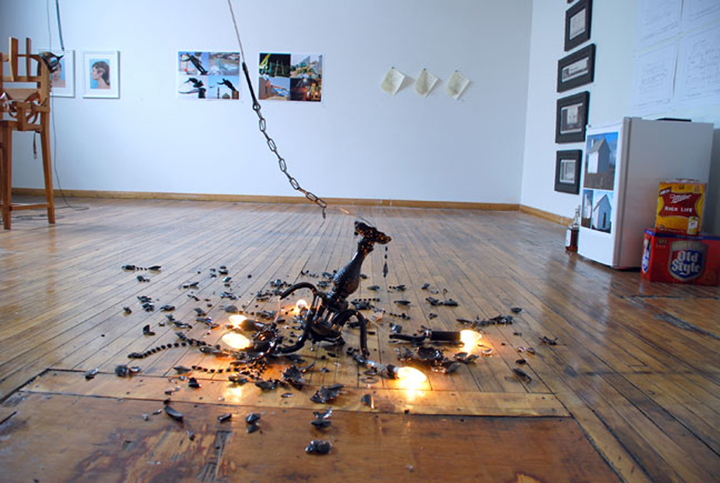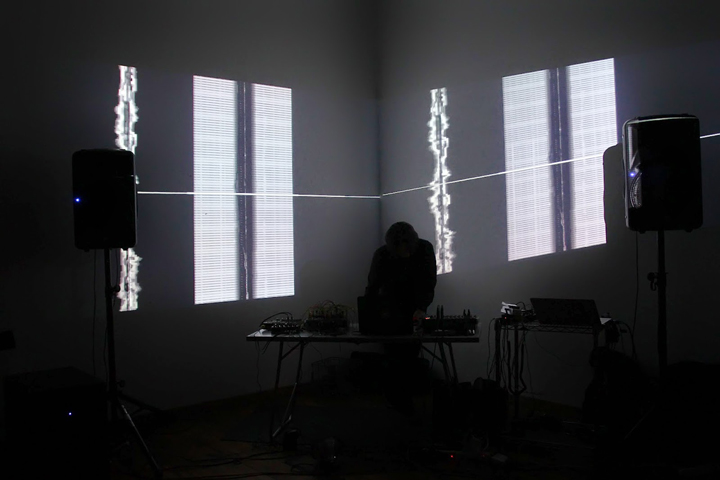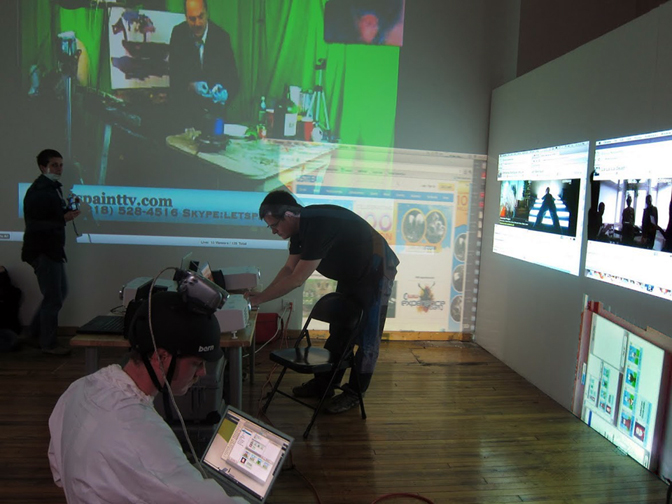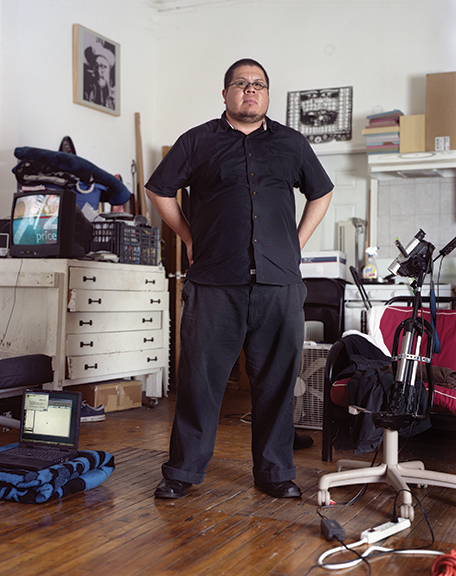Art spaces and galleries come and go as quickly as the shift from mild autumn to severe winter in Chicago. Antena, directed by Miguel Cortez, appears to have located the pulse of attrition. Offering an eclectic stable of artists who transform Antena into a new media art laboratory; one can rarely anticipate what will be encountered upon entry. The COMP Magazine recently caught up with Miguel to revisit Antena’s history, chat about barrio de Pilsen and look at the relevance of art + technology.
Why don’t we start with a little background on Antena. You’ve been running the space for some time, I believe since 2008? Is this correct? Did you have a specific mission for the exhibitions at inception? Has the focus changed over time?
Yeah, that’s correct. Noelle Mason was in the first show back in April 2008. But I didn’t just suddenly open Antena out of the blue. I’ve been organizing art exhibits since 1998 with an art collective called Polvo which consisted of myself, Elvia Rodriguez-Ochoa and Jesus Macarena-Avila. Currently the collective has been on hiatus since all 3 of us have been busy with other projects. Over the years we had several Polvo art spaces in Pilsen and organized tons of group shows dealing with various controversial subjects such as gentrification, religion, anti-war, etc. plus we also published a magazine. With Antena, the focus was more on it being a project space and giving 1-2 artists per show the opportunity to use the space to further develop and showcase their work without the constraint of commercialism.

Antena, What makes a man start fires? New work by Noelle Mason, April 25 – May 24, 2008
I have noticed that you are fond of works that are quite experimental and frequently use technology? For instance in looking at Fujui Wang, Martin Howse and Kristin Reeves, there is a combination of analog, digital and performative elements combined. Can you share your interest in art and technology and perhaps how these artists are well suited for Antena?
I became aware of video, performance and installation artists during my early 90s college years at The School of The Art Institute. But before that I took an experimental music class in high school and several photography and film courses. So those experiences helped further my knowledge of art history and appreciate the current influx of new media and experimental artists.
![Antena, [What Is This Feeling], New work by Kristin Reeves, June 27 –July 19, 2014](http://www.thecompmagazine.com/wp-content/uploads/2014/12/Kristin-Reeves-02.jpg)
Antena, [What Is This Feeling], New work by Kristin Reeves, June 27 –July 19, 2014
How do you see art and technology reflecting current aesthetic and social dialogues?
As technology evolves, the various tools for artists also expand, for example from making animated gifs, using the internet for interactive web sites, social media experiments, 3D printing and virtual reality, etc. Contemporary art should not be limited to museums and traditional commercial art galleries. Artists should have the freedom to challenge the notions and politics of society in order to help guide it to a better future.
![Antena, [What Is This Feeling], New work by Kristin Reeves, June 27 –July 19, 2014](http://www.thecompmagazine.com/wp-content/uploads/2014/12/Kristin-Reeves-01.jpg)
Antena, [What Is This Feeling], New work by Kristin Reeves, June 27 –July 19, 2014
Having lived in Pilsen for almost 20 years, I have seen a great deal of change, yet the neighborhood is still an edgy area of the city where commercial galleries are few in number. Do you have a special connection with this neighborhood? What type of changes have you seen? Is the area just suited to the artwork you enjoy showing?
I’ve been living in Pilsen since 1998 and I’ve seen art galleries/alternative spaces come and go. I was afraid back then that the neighborhood would become “yuppified” just like Wicker Park but it hasn’t happened. It’s still very diverse with an art edginess to it.

Antena, Fujui Wang, April 26, 2014
What do you have planned for 2015?
I’m planning on collaborating with artist Saul Aguirre on a few side projects and maybe opening a new art space separate from Antena.

Antena,Daisy Chain: An Anarchic Performance Event
Curated by Adam Trowbridge and Jessica Westbrook of Channel TWo
May 13- June 11, 2011
To view additional material on Miguel Cortez and Antena, please visit:
Antena Blog: http://antenapilsen.blogspot.com/
Daisy Chain info: Daisy Chain: An Anarchic Performance Event
To View: [What Is This Feeling] New work by Kristin Reeves
To View: Fujui Wang
Miguel Cortez lives and runs Antena in the Pilsen neighborhood of Chicago. Antena is located at 1765 South Laflin Street, Chicago, IL 60608. Phone: (773) 340-3516. If not organizing an exhibition or project, Miguel is attempting to transform his smart phone into some type of new fangled projector unit.

Miguel Cortez, artist and gallery owner, Chicago, IL, 2007
Interview and portrait by Chester Alamo-Costello


